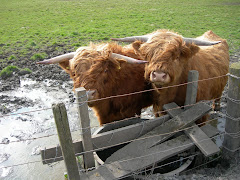Let's take a trip to an upland reservoir in early Spring to see how it's done. Today we'll visit the Washburn valley in Yorkshire and fish Fewston, one of its three large reservoirs.
Tackle
These upland reservoirs can be wild so this is no place for delicate tackle. I'm using a 9.5 ft 8 weight rod, a weight forward line and a 15ft 8lb fluorocarbon leader.
Fish Location
These large reservoirs often appear featureless with their long expanses of exposed mud. The secret is to exploit the topography of the land before it was flooded. Look for old lanes, walls, field barns and streams. Today I choose a spot where a linear scattering of stones on the bank and emergent weed in the water indicate the line of an old wall. Normally I wouldn't enter the water for my first few casts, but on this occasion a sparse line of weed about 5 yards out decides me to wade out so I can fish over it.
Let's catch Fish!
I open my lure box and select a lightly weighted black fritz concrete bowl (all dressings given at the end of this article). I wade out to the weed and make my first cast. I'm not going for distance and I aim to drop the fly just beyond the end of the weed bed, probably no more than 10 yards out. Trout are unlikely to swim through the denser weed and so will swim around the obstruction. This gives a 'pinch point' just off the end of the weed bed where a concentration of fish is likely to occur. Sure enough on my second cast there's a solid thump followed by the rapid, jagging fight of a decent rainbow trout. I soon net a plump trout of just over a pound, which I despatch in the net before unhooking it and transferring it to my bass bag.
I now commence to explore the water in front of me thoroughly. Casting along the bank first, then gradually extending my casting distance out to about 25 yards. The retrieve is a slow 'figure of eight' and at first I try to keep the retrieve as smooth and uniform as possible. Slow means slow! Count to three on each leg of the figure of eight in slow waltz time: one-two-three, one-two-tree. At this time of the year and in these unsettled weather conditions the trout are unlikely to be aggressive, so start slow. You're less likely to spook fish and you can always speed things up and add a bit of variety later.
Over the next hour I land 5 decent trout and lose a couple due to them throwing the hook. I don't strike when I get a take, but continue to retrieve until everything goes solid or the fish makes a dash for freedom. I then start to get abortive takes: quick taps which don't develop into a solid take. Time to ring the changes. I try speeding up the retrieve without success so I change fly to an anorexic Diawl Bach. This results in 2 more fish then the tap tap tap starts again.
Time to Explore
I re-tie my black lure and start to work my way along the bank. The secret is to cast short initially and gradually cast further and further. Move quietly and don't wade until you've explored the margins. Trout will quite happily hang out in a couple of feet of water and it is the shallows that offer much of the food in these upland reservoirs. This is classic reservoir bank fishing. Try a spot for 15 minutes and move. Keep on moving until you find fish. Fish for a while until the takes dry up then move on. Once I've taken my limit I don't bother with a net and simply release the fish in the water. If you don't want to take fish this offers the ultimate in mobility. A spool of line and a fly box in your pocket, with a pair of snips and some forceps on a zinger are all that you need.
Dressings
Concrete Bowl (Sean's version)
Hook: size 12 long shank lure hook weighted with one layer of fine lead wire
Tail: black marabou
Body: black marabou, tied in at the tips
Rib: stretched pearl tinsel
Thorax: lime green Fritz, trimmed short
Thread: black
Diawl Bach (Sean's version)
Hook: size 14 wet fly (or a heavy carp hook - I use a size 10 ESP Raptor)
Tail: a few ginger cock hackle fibres
Body: a single peacock herl (tie short and trim after tying to slim the profile)
Rib: stretched pearl tinsel
Thread: fluorescent orange
Sean Meeghan is an experienced and very successful angler. He has written articles for several magazines and writes regularly for FishingMagic. He contributes regularly through his blog.
Sean also manages his own company Synomy, which help companies build brilliant businesses
Article Source: http://EzineArticles.com/?expert=Sean_Meagan
Subscribe to:
Post Comments (Atom)












No comments:
Post a Comment